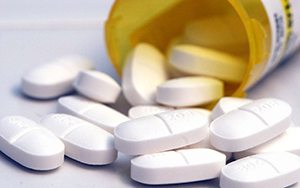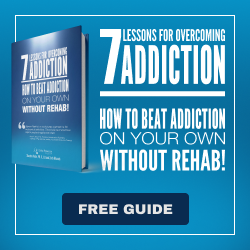What Is It with Painkillers? A response to Prof Jamie Coleman
Prof Jamie Coleman, in an article published on the BBC website, has a solution for the painkiller (or opioid) crisis — a crisis that is particularly virile here in the US, where going on a million people have died due to drugs over the last 20 years, most often involving opioid painkillers.

Coleman wants people not to expect that such drugs ‘kill’ pain — only that they ‘relieve’ it. While he’s at it, he wants to further reduce access to such drugs — a process that has had far-reaching consequences here — to include even the ones you get without a prescription (OTC) at the pharmacy.
What I like about Prof Coleman’s analysis and recommendation is that they involve how we think about pain and drugs as a culture. But I go in almost the exactly opposite direction when it comes to these drugs.
I first want to reference a classic book about opioids by a great British researcher — Dr Virginia Berridge, Director of the Centre for History in Public Health at the London School of Hygiene and Tropical Medicine. This was Prof Berridge’s Opium and the People: Opiate Use in Nineteenth-century England, published originally in 1981.
I’ll summarize her results as follows: there was a lot of opiate use — in the region known as the Fens, for example, an average of 3.5 therapeutic doses daily for every adult and child. Opiates were sold everywhere without prescription, primarily in tinctured form as laudanum.
But opiates (now called opioids) weren’t known as a special drug or social problem. Such problems only arose after the turn of the last century (the 1900s), when modern medicine declared the drugs addictive and restricted access to them, a process that has accelerated here in the States and that Coleman wants to take further.
For in the period of peak growth in drug deaths in the US, 2013 to 2017, when such deaths rose by 350% per annum, ‘painkiller’ prescriptions were reduced by 25 percent.
How did that work?
Let me cite two further pieces of research to clarify this result involving actual painkiller users, one British and one American.
In the UK, researchers at the BMJ studied the long-term effects of painkillers as prescribed to over 1,000,000 postoperative patients. Like Berridge, they found that nothing much happened. Only about 1% suffered harm, like addiction or a drug use disorder of any kind. They almost never died from the drugs.
Most patients by far simply desisted using the drugs as their pain declined, often not utilizing their full prescriptions. (This is the standard reaction — have you ever done the same?)
What determined their cessation wasn’t the strength of their dosage. It was the simple disappearance of the pain.
According to this study, giving people strong painkillers may prevent ultimate drug problems.
The next study, conducted in Massachusetts, demonstrates how this comes about. Deaths are extremely rare among patients who are prescribed opioids. In this study, fewer than one fifth of deaths involved prescription painkillers alone, without the presence of Fentanyl or heroin. Most critically, decedents had prescriptions for the opioids that killed them in just over one percent of cases.
In other words, restricting legitimate access to painkillers exacerbates drug problems and deaths. Drug deaths and harms are instead overwhelmingly associated with chaotic drug use and mixing of drugs by people who obtain opioids illicitly.
Let me be clear — I’m not telling people to rely on painkillers as a standard way to deal with pain. What I am saying is that allowing people to medicate their pain in a mindful way — in serious cases as prescribed by a physician communicating with the patient — is as good a method as has been determined over centuries for regulating pain and addiction.
Panic over painkillers — as epitomized here in the States — has been shown definitively not to be the best solution. In the 2017 WHO Global Burden of Disease international study of the impact on mortality and daily quality of life in 195 nations of various conditions, the US fared poorly in terms of the “worseness” of their drug-use outcomes.
“The prevalence of addictions in U.S. society seems to be on the rise, perhaps dramatically”.
According to The 2019 World Happiness Report, “The prevalence of addictions in U.S. society seems to be on the rise, perhaps dramatically”. Referencing the Global Burden of Disease report, measuring the Disability-Adjusted Life Years (DALYs) per 100,000 population, the US ranks second worst among 195 nations when combining all drugs together. Looking at specific categories of drugs, the US ranks worst for cocaine, second worst for amphetamines, and third worst for opioids.
In short; the US is not to be emulated in this regard.
Rather the reverse.
One last recommendation. Drug addiction and deaths are not random events. They nearly always occur among the most disadvantaged — the people with the fewest life resources and opportunities and the least hopefulness. These social and psychological conditions are what most need to be addressed, by politicians, public health specialists, and psychologists like myself.






In his analysis remove the word Opiod and insert Illegal drug name and it takes a totally different narrative. Plus don’t think for a second that anywhere in Europe doesn’t have a drug problem.
Coleman is Obviously an ignorant and arrogant Person. The Vast Majority (Over 97%) of people that died from opiods we’re NOT from Legally prescribed opiod meds Period! Even our own. CDC published that Less than .02% of overdose victims are from Legally prescribed opiod meds and Less than 1.3% of All Legally prescribed opiod patients Ever abused their meds in Any way! Duh, Wake up and Start talking about the TRUTH for once!
The statements that claim addiction increased in US are incorrect… they’re conflating use with addiction.
New report by SAMHSA shows drug addiction/abuse as flat, NO increase during last two decades (2.5% addiction, and 1.2% misuse, which is the same percentage since 1920). Alcohol addiction/abuse did increase but not drug addiction/abuse (twice as many die from alcohol than drugs per CDC).
The SAMHSA data covers the ‘opioid crisis’ and most notably, the time US began ‘new standards’ for treating pain (1/1/2001), when they started requiring hospitals to regularly access and treat pain.
Obviously treating pain did not cause any increase in drug addiction or abuse.
The influx of deadly illicit Chinese fentanyl is the only thing that has shown any correlation between overdose deaths.
Please don’t conflate use with addiction, thanks
As you note, whether addiction is increasing or not, drug deaths have increased radically — and not just due to opioids, but also cocaine, meth, benzodiazepines and even alcohol. So, up front, it doesn’t work to attribute the death epidemic simply to the appearance of fentanyl.
In addition, fentanyl has pharmaceutical value, and is preferred by some street users. So harm reduction that incorporates fentanyl is a legitimate concern and goal.
My point is not that addiction is increasing, and certainly not that prescribed opioid use is (as I say, it’s declining). My point is that drug hysteria (especially around fentanyl) is leading to self-immolating and chaotic supply chains and usage patterns, which are the primary cause of accelerating drug deaths.
Carol, in what way did your pain worsen?
Hi Carol, I’m a 25 year CPP. RSD/CRPS and other Complex disease. I was on compliant Rx Opiates for 19 years and they worked. I was force tapered from “massive doses” as they said, to zero. I wanted to die. I had to stop PT and Injections. I was also told I have Adhesive Arachnoiditis. Please don’t have injections used as a bargaining chip for 5 mgs of a short acting pill. My spinal cord is now injured forever and progressively. Before I had pain from DDD, Herniations and stenosis. Now it is
so severe and I have since been able to get to a pain Dr. who is a strong advocate for CPPs . Keep searching dear, it’ about quality !
And if one can answer “no” to all five questions?
Audrey,
I understand that some people face more difficulties than others (although all of us will encounter serious problems sometime). The goals outlined above remain the same — to pursue a worthwhile life as best we can, seeking what help we need. This may involve taking only the smallest steps (even making motions or relying on mechanical devices in the most difficult cases).
But — often with caring, nonjudgmental providers and helpers we believe everyone can move forward in key areas of their lives.
It is our privilege as human beings to have this chance to live as fully as we can, and I hope you will do so.
I am a chronic pain patient not receiving adequate pain medicine.
I am desperate enough to try all the injections and lidocaine infusion. I just had my second one and I’m in so much pain right now that I want to go to the hospital but I know they won’t do anything. All I can do is up my gabapentin that I avoid taking because it makes me loopy and feeling like I am high.
Hi Carol,
It sounds like you are having a tough time. The issue for any human being is not what drugs they may be taking, but the quality of their lives.
First, can you manage your ambient pain?
Second, can you function, be mobile, carry out daily activities?
Third, can you maintain your relationships and intimacy?
Fourth, can you work and be productive?
Fifth, are you okay with yourself, your most important relationship?
Keep these goals in mind, even if only in the most basic forms.
Professionals — you yourself — may work to reduce your reliance on medications, when and if possible. But whether you do or not, the most important thing is not to get down on yourself.
And policies that work against self-acceptance of long-term reliance on medications as their fundamental position are not the way to accomplish that primary goal.
Long-term pain sufferers are the walking wounded of our new painkiller phobia.